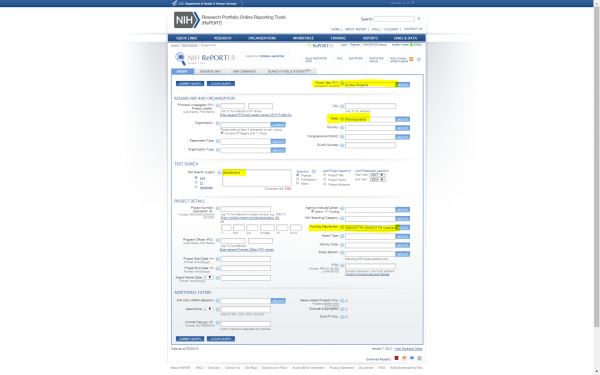Angel Insights Blog

Monday, February 12, 2018
Tapping into America’s Biomedical Seed Fund
By: Ethel Rubin, PhD, Entrepreneur-in-Residence, NIH Office of the Director Office of Extramural Research
Looking for a deal in your backyard? The NIH is the world’s largest investor in early stage life sciences companies. Over 1000 companies annually tap into NIH’s SBIR and STTR program for nondilutive funding to the tune of $980M in FY17. Did you know the NIH maintains RePORTER, an online database, of all funded companies and projects? This link will take you to what’s been funded this fiscal year, but you can query the database yourself to look for companies specific to your interests. There are over 25 different ways to search and visualize the data with built in analytics (click on the Data & Visualize to create graphs and more you can export directly to PowerPoint and Excel).
For example, if you’re based in Pennsylvania looking to engage with a nearby NIH-funded small business working to defeat Alzheimer’s Disease, your search may look like this:

As of February 9, 2018, this search results in a list of 5 companies that collectively won 11 awards. Clicking into a project shows additional details. Export all your results or just what’s most interesting to you to save the information.

NIH’s mission is to turn discovery into health. Our funding turns research into commercially viable products, and small businesses are a primary engine for commercialization. Many angels are uniquely positioned to both invest in and mentor these companies as they go through the commercialization process. RePORTER is a powerful tool you can use to find investment opportunities or review grants and contracts part of your due diligence and/or competitive intelligence efforts.
If you have additional questions about NIH’s small business programs, please email the NIH SBIR Office or our Entrepreneur In Residence, Ethel Rubin. For additional help with RePORTER, review a tutorial or ask a question.
Interested in the universe of small businesses funded by NIH through the SBIR and STTR programs since the beginning of the fiscal year?







